During the ride, our tour guide gave us a few history lessons about the city.Established by the Lateran Treaty in 1929, Vatican City is the smallest independent state in the world, occupying only 110 acres with around 800 occupants.
Vatican City came to be in its current location because in 326 AD a Christian church was built over the tomb of Saint Peter (one of the twelve Disciples of Christ).The square immediately in front of the church was also the home to the Circus of Nero, where Christians were crucified in state sponsored martyrdoms during the 60s AD.In fact, Saint Peter was crucified upside in this location in 64 AD.
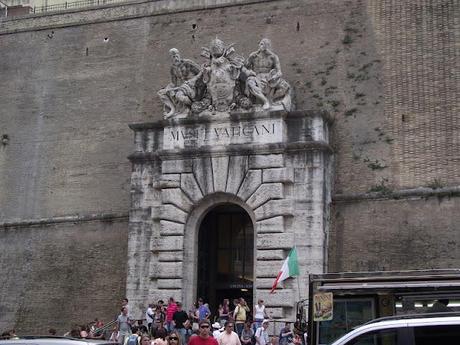
After our short history lesson, our tour guide dropped us off at the entrance to the Vatican, where we were met by our Vatican tour guide.The Vatican only allows certified tour guides to operate within their premise; therefore, Rome in Limo (our tour company) suggested that we hire one of their preferred Vatican tour guides.
The tour guide was 19 Euro ($26) per person and it was money well spent.She seriously made our experience.Without her guidance and stories, I think we would have missed a lot and wasted a lot of time.
Like for the Colosseum, Rome in Limo asked us to pre-purchase our Vatican tickets online (a necessity since the place often sells out).Our Vatican tour guide took our paper copies and translated them to hard copies and walked us through the security area.
If you want to enter the Vatican Museums and Sistine Chapel, you must enter the Vatican through this Visitor’s entrance.It seems counterintuitive because the entrance is not at St. Peter’s Square.In fact, if you are touring the Vatican Museums and the Sistine Chapel, the Basilica and St. Peter’s Square will be the last thing you visit.In the end, it’s not a big deal but it does kind of ruin that tada you are at the Vatican moment.
Contributing to that minor letdown is the fact that the Visitor’s entrance was built in the last few years making it look very modern.It’s not the epic ancient entrance you are looking for but this is the only way to gain entrance into the Vatican Museums and the Sistine Chapel.
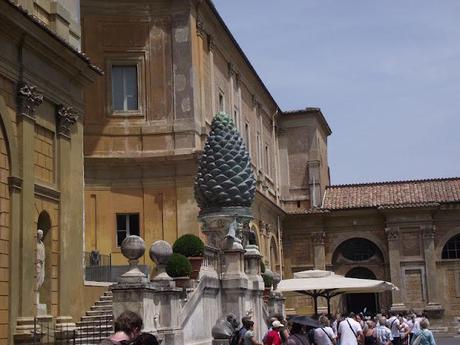
Past the security area, our tour guide walked us over to the Cortile Della Pigna, named for the pine cone statue that sits atop the stairs.Originally, the 4 meter bronze pine cone was on display in the Pantheon.
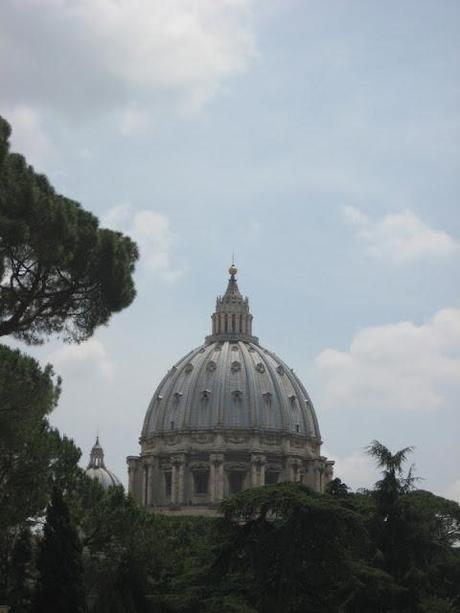
Just in front of us, we could see the steeple of St. Peter's Basilica. Our excitement was off the charts.
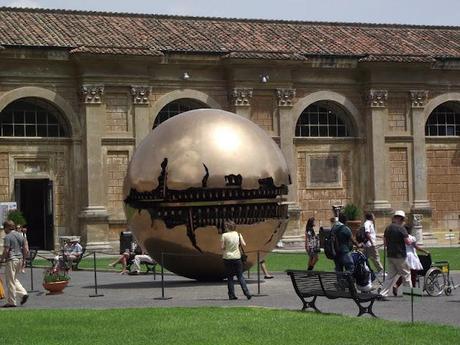
Sitting in juxtaposition to this ancient artifact is a large modern sphere sculpture, Sphere Within Sphere, created in 1990.The inner sphere represents Earth, while the outer sphere represents Christianity.
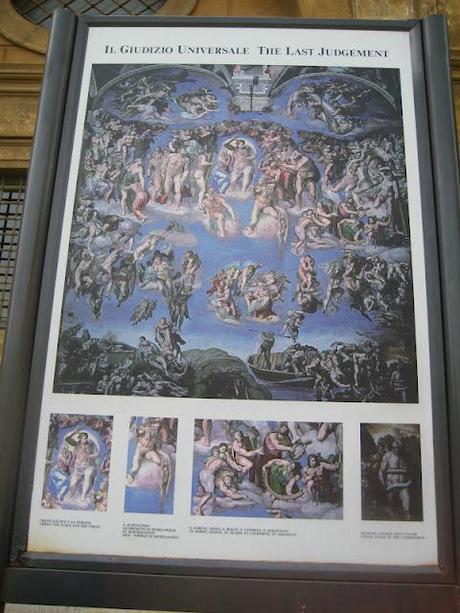
To the right-hand side of the courtyard, all large posters of the ceilings of the Sistine Chapel.Tour guides gather around these posters to give their tour group an explanation of the Chapel since talking is not allowed in the Chapel.
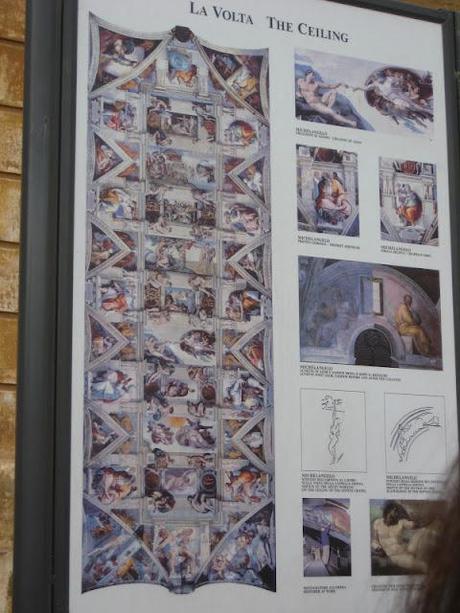
I’m going to save the Sistine Chapel explanation for tomorrow’s post because it would be information overload to do both the Vatican Museums and the Sistine Chapel in one post.
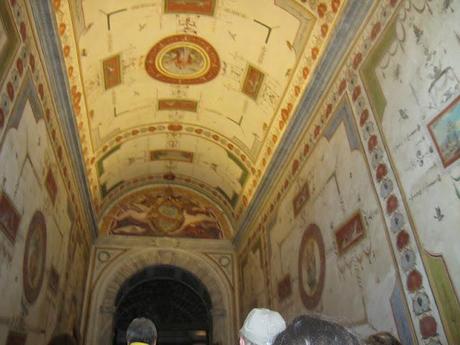
After about a 30 minute explanation of the Sistine Chapel from our tour guide, we were led into the Vatican Museums.
The Museums are a collection of over 54 different galleries and house some of the world’s most precious art that has been collected by the Catholic Church.The Museum was originally founded by Pope Julius II in the early 16th century.
Sadly, most visitors walk through these galleries not to see the priceless works of art but to see the Sistine Chapel.Literally, the only entrance to the Sistine Chapel is after about 1 mile of Gallery space.Technically, I guess you could get to the Chapel and then see the Gallery but it would be backtracking and take you farther away from St. Peter’s Basilica which is adjacent to the Sistine Chapel.
Luckily, our tour guide was able to walk us through the most important galleries along the way to the Sistine Chapel.
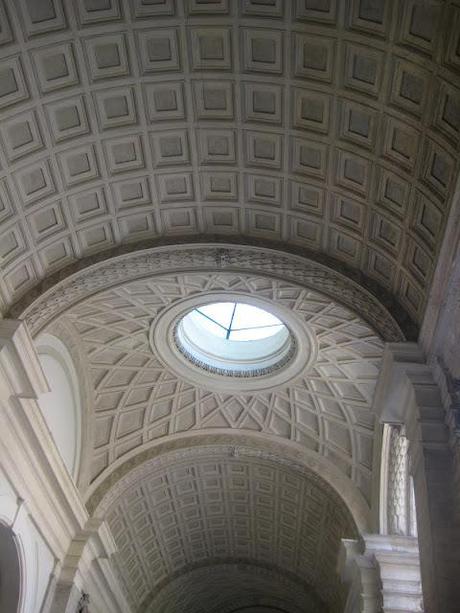
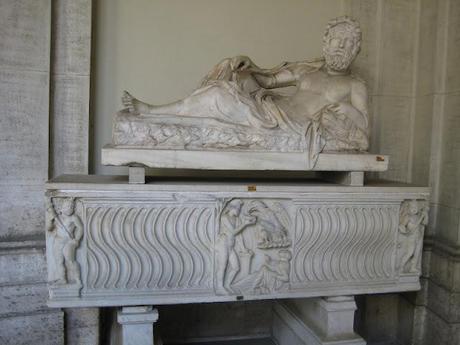
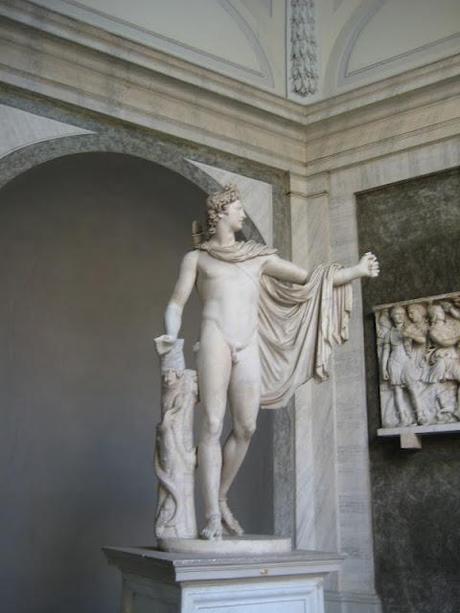
When we first walked into the museum, we were greeted by a short hallway and then walked toward an outdoor gallery called the Octagonal Courtyard, which features Roman and Greek sculptures.
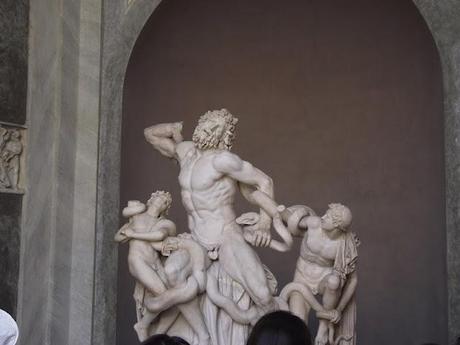
One of the feature displays is Laocoon and His Sons, unearthed in 1506 near Domus Aura.It said that this statue was commissioned by a wealthy Roman around the 1st century AD but no one is really sure.The statue was admired by Michelangelo who convinced the then Pope to purchase the statue.
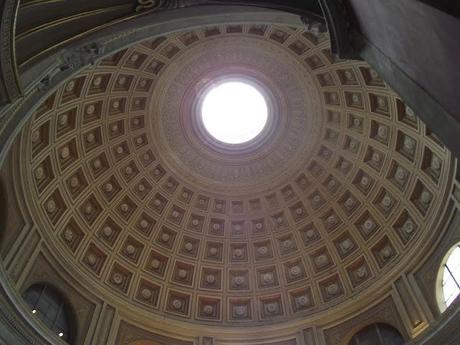
Our tour guide then walked us through the Sala Rotunda which is designed much like the Pantheon but built in the 18th century.
The perimeter is lined with ancient statues including a bronze statue of Hercules.

In the center sits, a grand porphyry bathtub evacuated from the Domus Aurea from the 1st century AD.
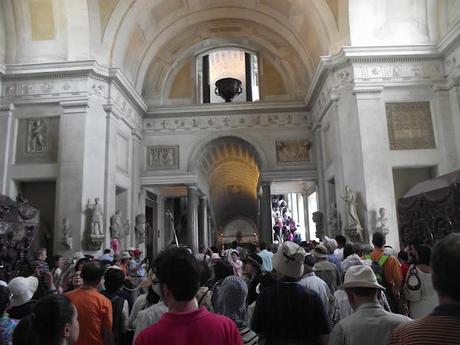
Next, we moved through the Greek Cross Room, which contains the tombs of the Empress Helena and her daughter Constantina.
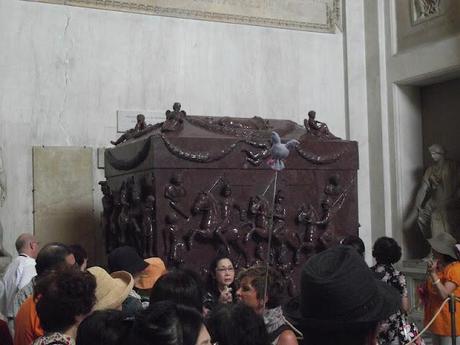
Can you tell it was starting to get really crowded?
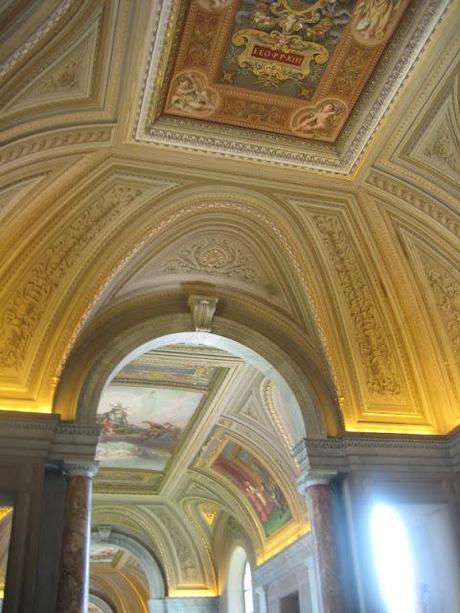
The next room is the Gallery of the Candelabra, which contains amazing ceilings.
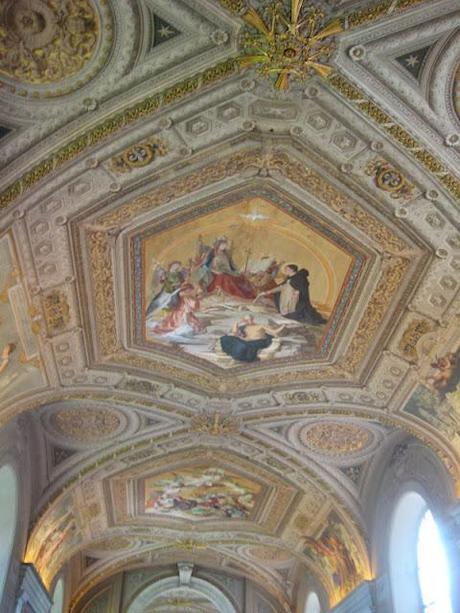
The ceiling was painted in the 1880s by Domenico Torti and Ludwig Seitz.
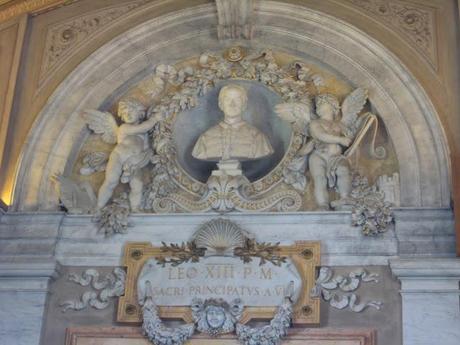
The hall is covered with marble statues as well as 8 white candelabras (hence the name).
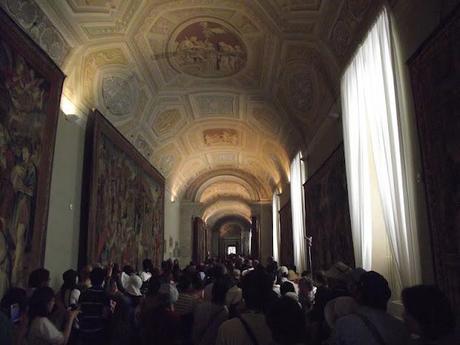
We then moved onto the Gallery of Tapestries, which contains two sets of tapestries, one for the life of Jesus, done by Raphael’s students, and one for the life of Pope Urban Vii Barberini.
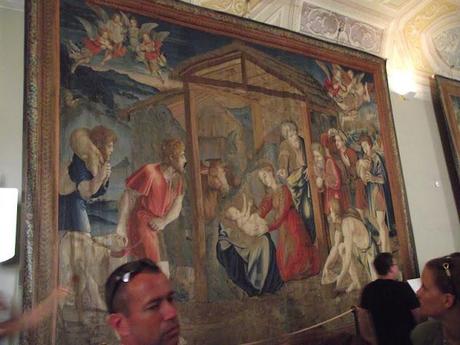
The Raphael series used to adorn the lower walls of the Sistine Chapel in the 1500s but they were moved to the Museums in the 1830s.


The tapestries were made of silk, wool and gold for around $3,400 each.
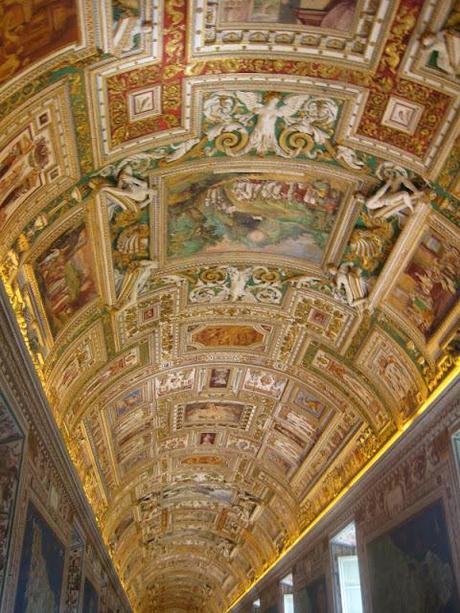
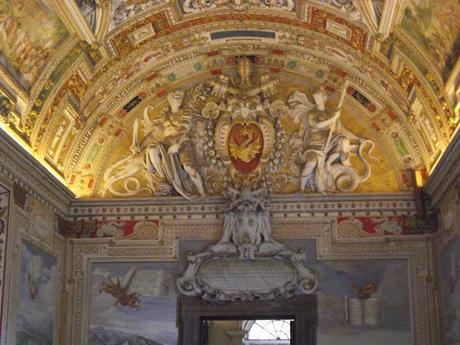
Next was the Gallery of Maps that displays 40 maps of Italy frescoed onto the walls by Ignazio Danti between 1580 and 1583.
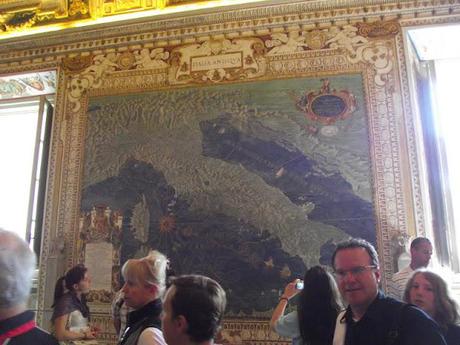

At this point, our tour of the Vatican Museums was over.And we walked down the stairway toward the Sistine Chapel, which is where I will pick up tomorrow.
If you have the chance to see the Vatican Museums, you definitely should.I regret that we didn’t have more time there to witness all of the beautiful artwork.We probably saw about a quarter of what they actually have and often times people spend an entire day in the Museums.
I would also highly recommend a tour guide or some kind of audio guide.The artwork will make no sense without some sort of explanation.Of course, it will be beautiful but you won’t appreciate the meaning without some supplemental information.
The Museum is not like a gallery in the US where you would find descriptions of the artifact next to it.Also, artifacts are literally cramped into every orifice possible so it would be hard to distinguish between the important and less important things without some outside help.
I will say that even though we had a tour guide, I still had to look up most of this information.You experience serious sensory overload in a place like this where the next thing is more beautiful than the last.I think your brain is so busy trying to keep up with all the amazing surroundings that it’s hard to absorb much.
Also, another warning, if you visit in the Spring or Summer, it will be hot and crowded and smelly.Many parts of the Museum don’t have AC so make sure you dress in layers (you will need the extra layers for the Sistine Chapel where knees and shoulders are not to be seen). You wouldn’t want to ruin your experience by sweating to death.
And be prepared to feel like cattle being corralled.Traffic essentially moves in one direction so if there’s a slow group ahead of you it can create massive backups.Rest assured you will have plenty of scenery to keep you entertained.Just be prepared to stop and take a look around every once in awhile while you wait for the crowd to move along.
But no matter what you do, don’t miss the opportunity to visit the Museums.While the Sistine Chapel and St. Peter’s Basilica were mind blowing, the Vatican Museum holds just as much precious, priceless, breathtaking artwork.
What You've Missed:MonacoPisa Florence
Ancient Rome
Up Next: The Sistine Chapel
